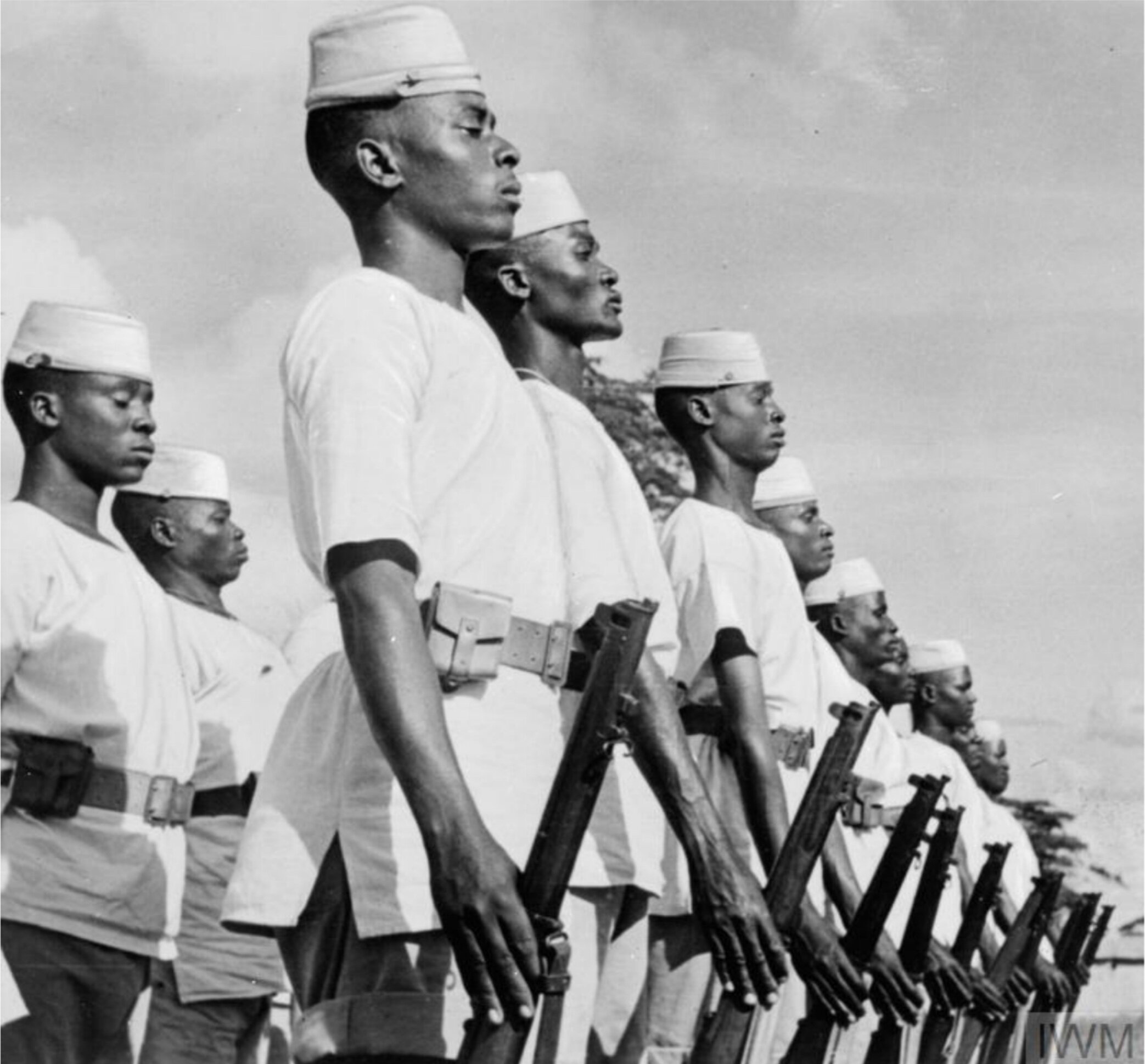Military Contributions
The Second World War was fought between the Axis powers and the Allies. The core Axis powers were Germany, Italy and Japan, who were supported by their colonies in Africa. The chief Allied powers were Great Britain, France, the Soviet Union, the United States, and China, including the countries they had colonised in Africa and across the world. However, more generally, the Allies also included a number of nations from around the globe.
The majority of countries in Africa were colonies of the European Allied powers during the war, such as Britain, France, Belgium, and were therefore brought into the conflict. These countries made important military contributions and were key to the success of the Allies across Africa, Europe and Asia. For example, over the course of the Second World War, approximately 500,000 soldiers of the British Forces were from British Colonies in Sub Saharan Africa.
African Soldiers performed a full range of tasks, including: fighting in major battles, moving ammunition and supplies on the battlefield and to other locations, helping to save wounded soldiers (often whilst under fire), building military bases, airfields and roads and even guarding the military bases that they helped build. Africans also served in the Royal Navy, Merchant Navy and Royal Air Force.
Did you know…?
At the start of the Second World War there were approximately 12,830 African soldiers in British Service, by the end, almost 500,000 served.
3,500 Nigerians served in the Royal Navy.
Kenyans serving in the Royal Navy rose from 109 to 800 during the war.
Between 1940 and 1941, African soldiers played an important role in the East Africa Campaign. The campaign was fought between the Italian Forces, who formed part of the Axis Powers headed by Germany and Japan, and the Allies. 19,000 of the 88,500 Allies were from East and West Africa, fighting alongside soldiers from South Africa, Britain and British India.
The Allied forces were met by over 450,000 Italian and Axis forces. Although their numbers were much smaller than the Axis forces, they lost 3,000 troops, while 420,000 Italian forces were either killed, wounded or captured. This was the first time in a land campaign that intelligence was used from Bletchley Park, the UK-based centre known for code-breaking during the Second World War. This use of intelligence, combined with a strong military strategy, gave the Allied forces a decisive edge during the East Africa campaign.
DID YOU KNOW…?
During the East Africa campaign…
In the Winter of 1940, Indian and Sudanese troops crossed into Eritrea and helped to capture the town of Keren, which was of strategic importance to both sides. In the process, they fired over 100,000 artillery shells which had been transported in 1000 trucks.
In February 1941, a second front into Ethiopia was launched from Kenya which included 33,000 East Africans, 9,000 West Africans and 27,000 South Africans.
The 23rd Nigerian Brigade was instrumental in the capture of Mogadishu, the capital of present day Somalia, in May 1941.
One of the more unusual elements of the East Africa campaign was a group called Gideon Force, comprising of British and Ethiopian Soldiers. Today we would call them special forces.
Gideon Force’s mission was to secure Emperor Haile Selassie to his throne in Ethiopia (then Abyssinia), which they succeeded in doing. During the campaign they destroyed or seized Italian equipment and captured 8,100 Italian forces at Addis Derra in May 1941. At the end of the East African Campaign, African Troops were re-tasked and eventually became part of the 14th Army fighting in Burma…
In December 1941, the Japanese Army invaded the then British Colony, Burma (present-day Myanmar). The fighting that broke out between the Japanese Army and the Allied forces, led by the British Indian Army, lasted 3 years. The troops were faced with extreme terrain, difficult weather and the threat of disease.
Two West African Divisions, the 81st and 82nd, fought in Burma, primarily in the Arakan Campaign. This amounted to approximately 73,000 people. The 81st Division was the first division in history to be resupplied almost entirely by air. The parachutes used to drop its supplies were not made of silk but of jute. They were an emergency ‘invention’ because much of the silk was being used to make parachutes for D-Day. It took a month to design and bring the ‘parajutes’ into service to supply the Division.
Over the course of the war there were 7,301 East and West Africans killed. The single greatest loss for African Troops were the 900 drowned on the SS Khedive Ismail, a troop ship torpedoed in 1944 by a Japanese Submarine. Despite these losses, the contribution of the African troops was key to the success of the Commonwealth forces across Africa, Europe and Asia.
DID YOU KNOW…?
The 28th East African Brigade was key to the crossing of the River Irrawaddy. Its mission was to deceive the Japanese into thinking they were opening the main crossing over the river. They succeeded and an Indian Division was able to cross the river unopposed, a key success for the rest of the operation.
SECOND WORLD WAR CONTENTS:
COMING SOON!
Profiles People
Living through Conflict
Commemoration and Legacy
Artistic Responses to Conflict






